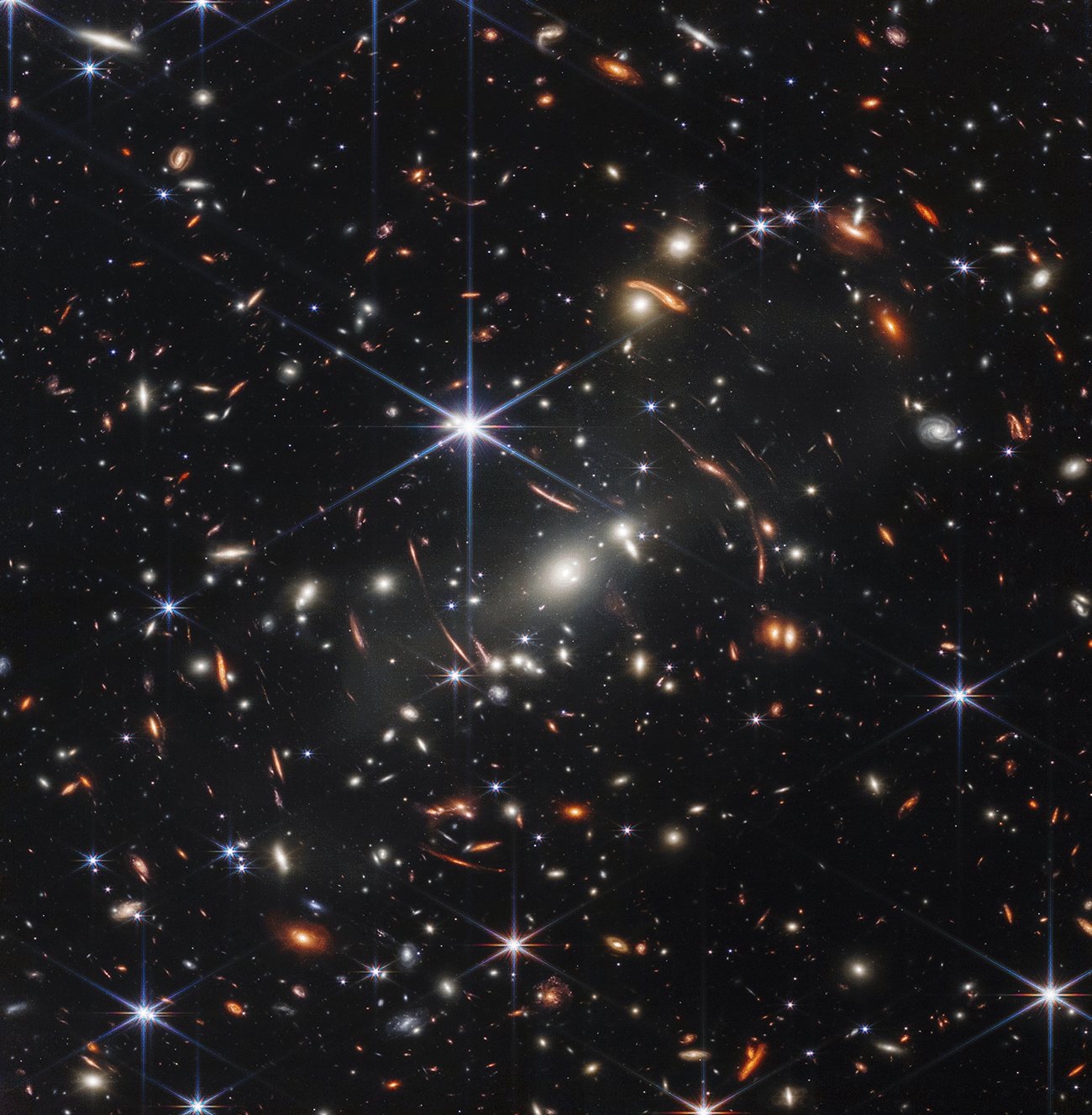Epilogue
We pray for one last landing
On the globe that gave us birth;
Let us rest our eyes on the fleecy skies
And the cool, green hills of Earth.
—Robert A. Heinlein, “The Green Hills of Earth”
I finished writing this book on the day that NASA released the first non-test, polished image from the James Webb Space Telescope (Fig. E.1). It is a deep field view of a patch of sky about the size of a grain of sand held at arm’s length. Some of the galaxies in the image are captured at a moment in time 13 billion years ago. That’s only 800 million years after the universe itself was created. Gazing at the picture helped ease some of my anxiety about how long it had taken me to write this book—what’s a few years when you are looking at light from near the dawn of creation?

But contemplating such vast stretches of time and space is just as terrifying as it is comforting. All the joys, wonders, and accomplishments of our individual lives are inconsequential nothings projected across the backdrop of eternity. Even the roughly 4-billion-year history of life on Earth is a trifling speck in the fabric of space and time. It can be tempting to ask, “What’s the point?” But the point is that we live our lives here and now. We measure our lives in sunrises, warm spring afternoons, and quiet star-filled evenings. We make friends, kindle loves, and lose both. We see, taste, smell, hear, and touch the world. No matter how tiny and inconsequential it may be, it is our world. Our life.
More than ever, we can make of the world what we may. We can transcend the loneliness of the universe by creating a paradise in the present. I hope that this book has demonstrated how closely our own happiness and well-being are tied to the wondrous complexity of life on Earth, as well as how we are increasingly shaping Earth’s biodiversity. Earth is our heaven to make or to lose.
Media Attributions
- FigureE-1 © NASA, ESA, CSA, STScI is licensed under a Public Domain license

